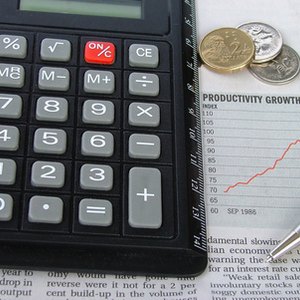
Stock buyback programs are considered to be a positive by investors. Buyback programs are launched by corporations to purchase shares of the company's own stock in the open market or directly from investors. If you own shares of a company that announces a buyback program, the effects will probably be positive for your investment.
Function
Share buyback, also called stock repurchase, programs are initiated by a corporation's board of directors. The board issues a resolution to spend a certain amount of money to repurchase company shares. Most buyback programs leave the timing of the purchases up to company management. The buyback may consist of an offer to existing shareholders to purchase their shares at a set price or may allow management to buy shares in the open market.
Considerations
Corporations have three main options of what to do with company profits. The management can elect to reinvest the money into the business and buy more equipment and supplies or hire more employees. Another option is for the board of directors to elect to pay shareholders a dividend. Many companies pay regular dividends to shareholder as a way to distribute company profits. A share buyback is another way to use cash. Buying shares reduces the number in the market. Less shares means each share is worth a larger piece of the company.
Effects
Investors keep a close eye on a company's earnings per share. The earnings per share is the total net income divided by the shares outstanding and investors like to invest in companies with growing earnings. A stock buyback program has a positive effect on the earning per share. For example, a company has $10 million in net income and 10 million shares outstanding. The earnings per share is $1.00. If the board institute a share repurchase program and the company buys 10 percent of the outstanding shares, the $10 million in profit is divided by the 9 million shares still outstanding, resulting in a earnings per share of $1.11. Higher earnings per share should result in a higher stock price.
Potential
A stock buyback program that purchase shares with excess company cash along with a stable, increasing dividend policy indicates a company management that is committed to its shareholders. If a company has a steady of history increasing profits and good dividend payments, the announcement of a buyback program should be a boost for stockholder value and the share price.
Warning
Some companies in attempt to increase the share price will use borrowed money to fund a share buyback program. This increases the companies leverage and if it works will boost the net income per share. However, an increased debt load will have a strong negative effect on the stock if the company has a business slowdown. According to "USA Today," General Motors spent $20 billion on buybacks from 1998 until 2002 and went bankrupt in 2009. Dell lost $17 billion on its buyback program, buying stock just before the market crashed in 2008. Look for companies that have consistent programs to buy the stock when it is cheap, not at record highs.
References
- USA Today: Stock Buybacks Lose Some Luster
- U.S. Securities and Exchange Commission. "Tender Offer." Accessed Nov. 8, 2019.
- Harvard Business School. "The Case for Stock Buybacks." Accessed Nov. 8, 2019.
- National Center for Employee Ownership. "How an Employee Stock Ownership Plan Works." Accessed Nov. 8, 2019.
Writer Bio
Tim Plaehn has been writing financial, investment and trading articles and blogs since 2007. His work has appeared online at Seeking Alpha, Marketwatch.com and various other websites. Plaehn has a bachelor's degree in mathematics from the U.S. Air Force Academy.

